NeXT
Veteran Member
For as long as cars have been around, shops have been trying to find gimmicks to speed jobs up. The idea of the "engine analyzer" or "service scope" is not a new one and these were parked around auto service centers for a little over 50 years, becoming commomplace enough that in the early Grand Theft Auto games a similar looking diagnostic device can be seen in garages and cutscenes and Garth's AMC Pacer in Wayne's World is attached to one when Phil was doing an inspection.
To be blunt, this is several specialty but still useful diagnostic tools integrated into one device. The idea was that it didn't require multiple carts or multiple people to perform these tasks, saving time and keeping the lifts empty. Sun Electronics is a company next to Bear and Allen who were marketing these machines for decades. Those earlier model analyzers seem to consistently sell for hundreds or thousands to go into private collections and garages and sure why not, because when you got almost $100K in classic MOPAR in your three car garage you need a tool to brag with. No promises though that it actually works. I'll explain later.
By the end of the 80's however these made less sense to cart around the garage. Cars were getting more reliable and their onboard computers were able to detect their own faults. By the time OBD2 was released they were basically extinct.
Those later machines are far less desireable because their modern look and video displays clash with the style of classic cars such as the Newport, Barracuda, Falcon and the Javelin and the old guard is still resentful if not completely ignorant of the Malaise Era. Your loss then. While the later machines might clash with your car's asthetic they do circles around the older machines in terms of capabilities and cost far less. Using Google you can find dozens of closed sales, auctions and liquidations where machines were selling for $200, $100, $50 or if they sold at all the new owner was typically paying the opening bid.
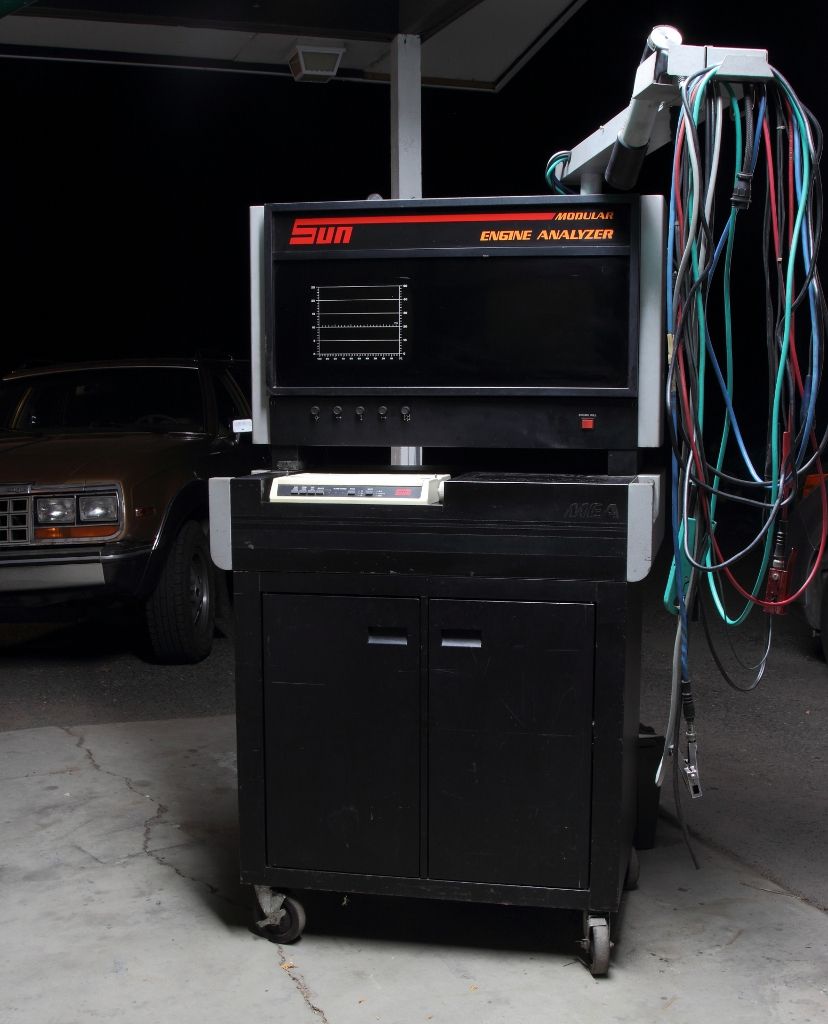
This is the MEA-1500. This particular machine was manufactured in 1992 but date codes also indicate it was a thing going back to the 80's. It can do points. It can do solid-state. It can do the early distributorless ignitions. These were sold as a base machine with measurements for volts, ohms, RPM and high voltage patterns. Everything else is an option.
-The cart
-The boom arm
-The ammeter and vacuum
-The 4-gas analyzer
-The mentioned distributorless ignition testing package.
-Magnetic timing instead of strobe
-The printer
-The late-model computer interface kit ("Data Link")
-The Diesel Engine Kit
-Extra adapters for various other car manufacturers
This was one of the last models sold before Sun redesigned the next model machine (Modular Computer Analyzer - The MCA-3000) to be a bunch of fancy ISA cards in a PC and it devolved from there to basically a PC on a cart.
With a basic machine you can monitor RPM, look at primary and secondary voltages, coil patterns, selectively kill cylinders and use a strobe to set timing. The cart and boom are convenience. The ammeter and vacuum transducer are handy for monitoring loads. The gas analyzer monitors CO, CO2, O2 and hydrocarbon emissions. Magnetic timing increases timing accuracy. The printer lets you produce hard copies of the display. (but not the scope!)
The internals consist of an MC6803 embedded system with a large amount of I/O expansion, a CRTC and settings/calibration data stored in a Dallas no-slot battery-backed module. Your displays are a conventional raster display and an oscilloscope.
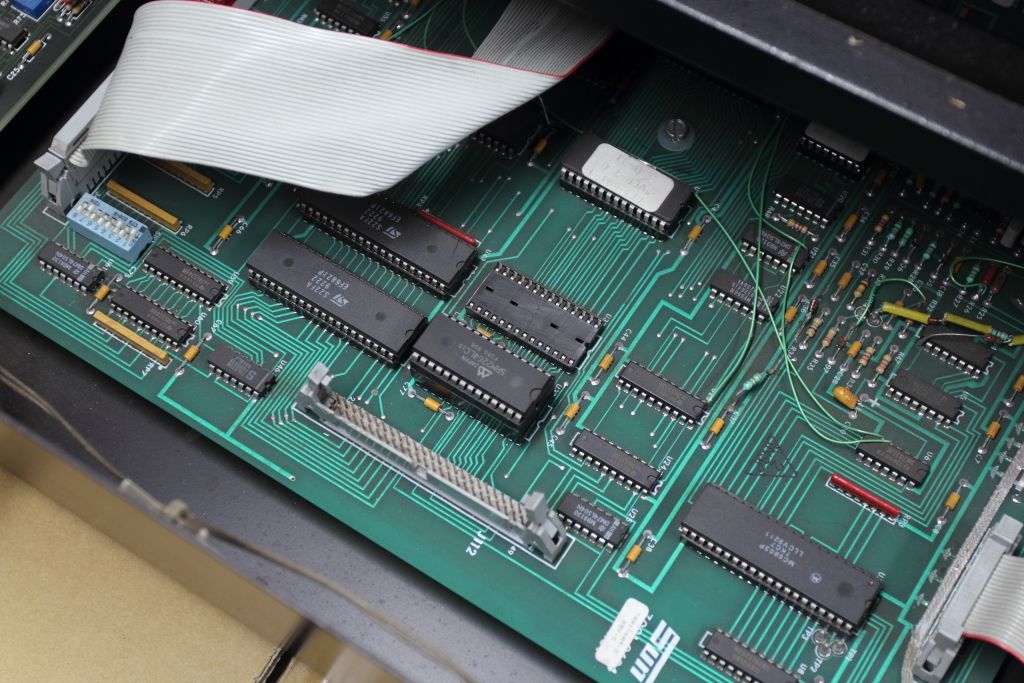
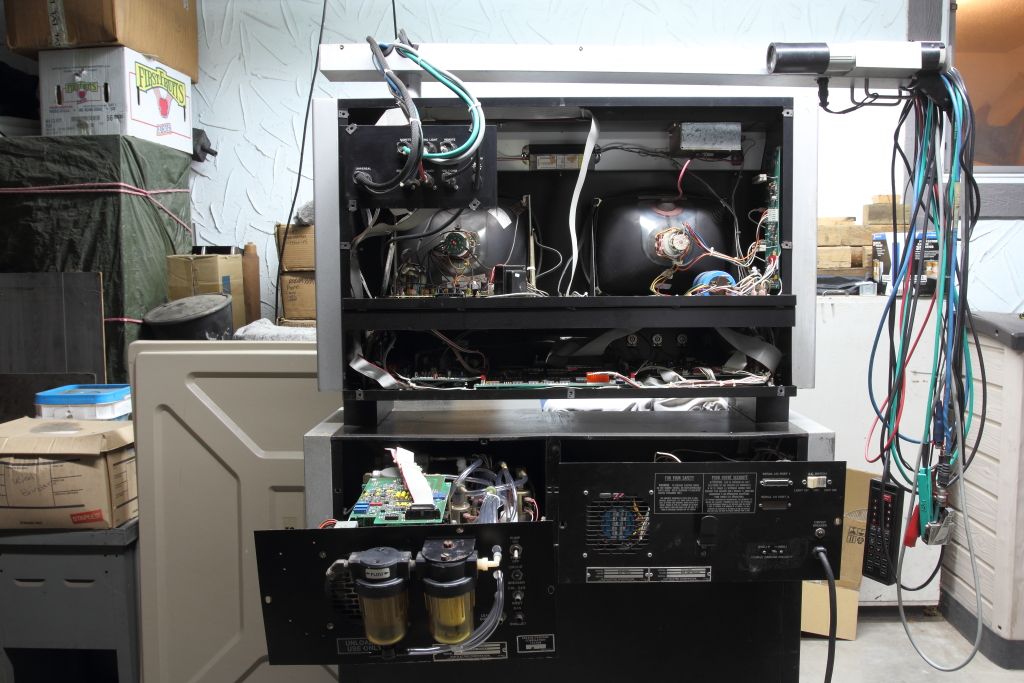
My machine is specced with the base hardware, plus the cart, boom, ammeter/vacuum, gas analyzer, Distributorless ignition, printer and technically the magnetic timing kit was with it originally, but I didn't receive the probe. Other than needing a substantial cleaning it was reassembled and came up no problem on the first try.
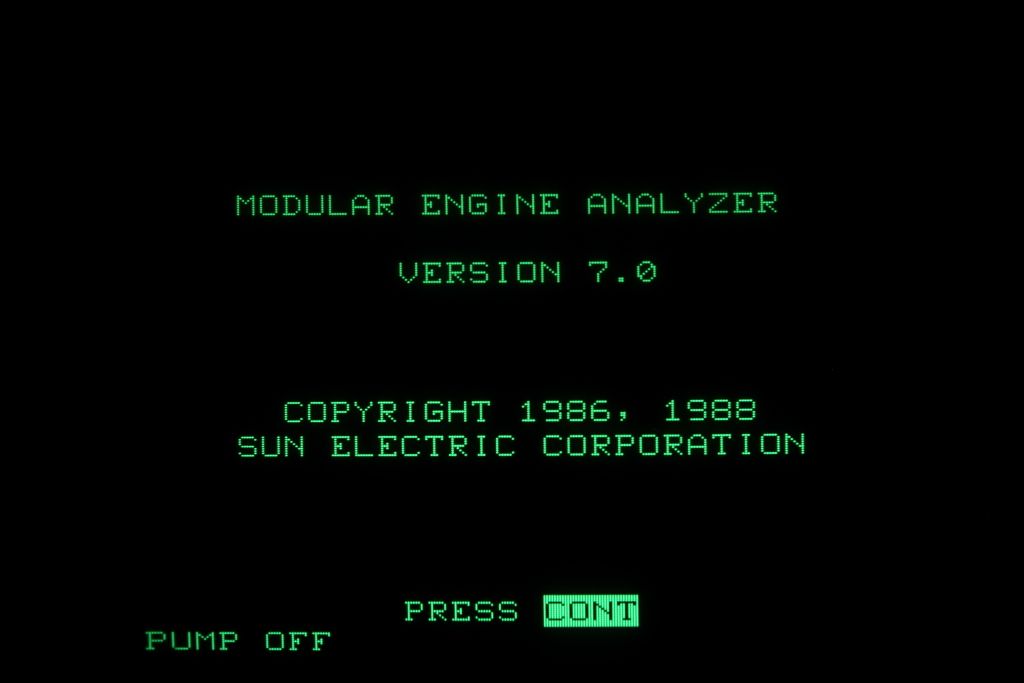
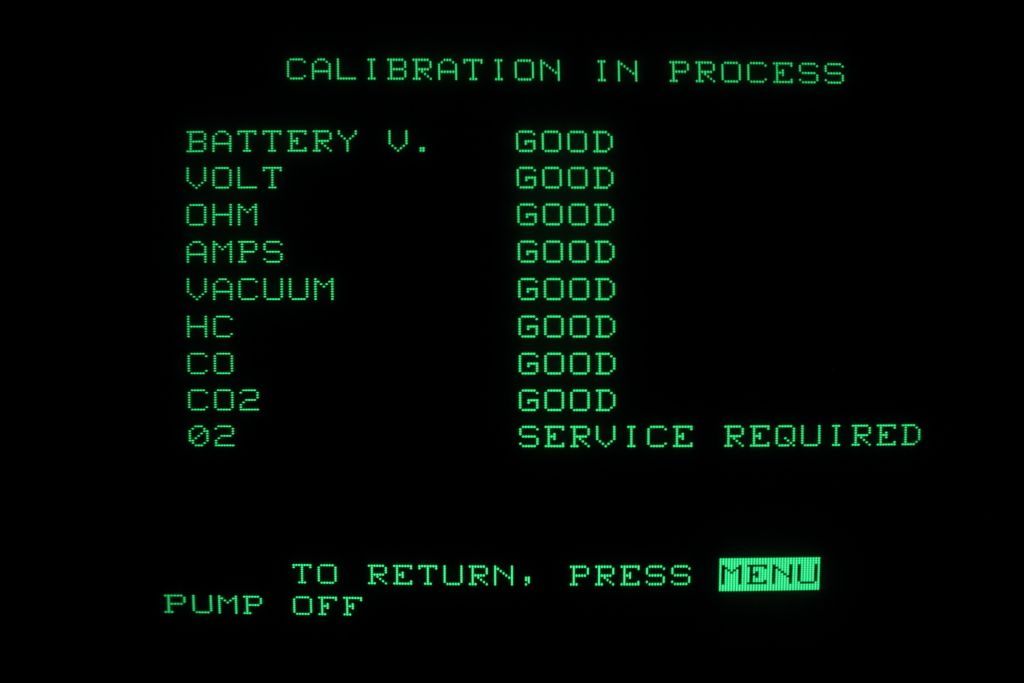
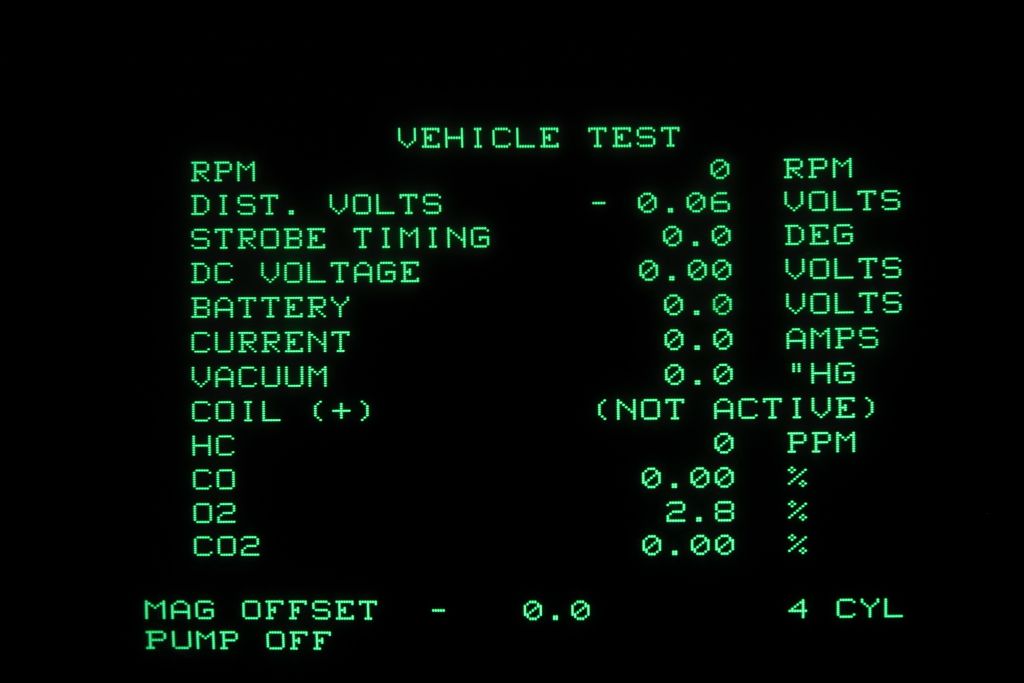
The scope however needed attention. It had an open fuse but I could find no reason for it to of popped, so a new fuse went in and it continued to work.
The battery backed memory however was going to be a problem. While normally the gas analyzer doesn't need a constant supply of calibration gas, it does need a place to store that calibration data. With a dead battery the calibration data is completely lost.
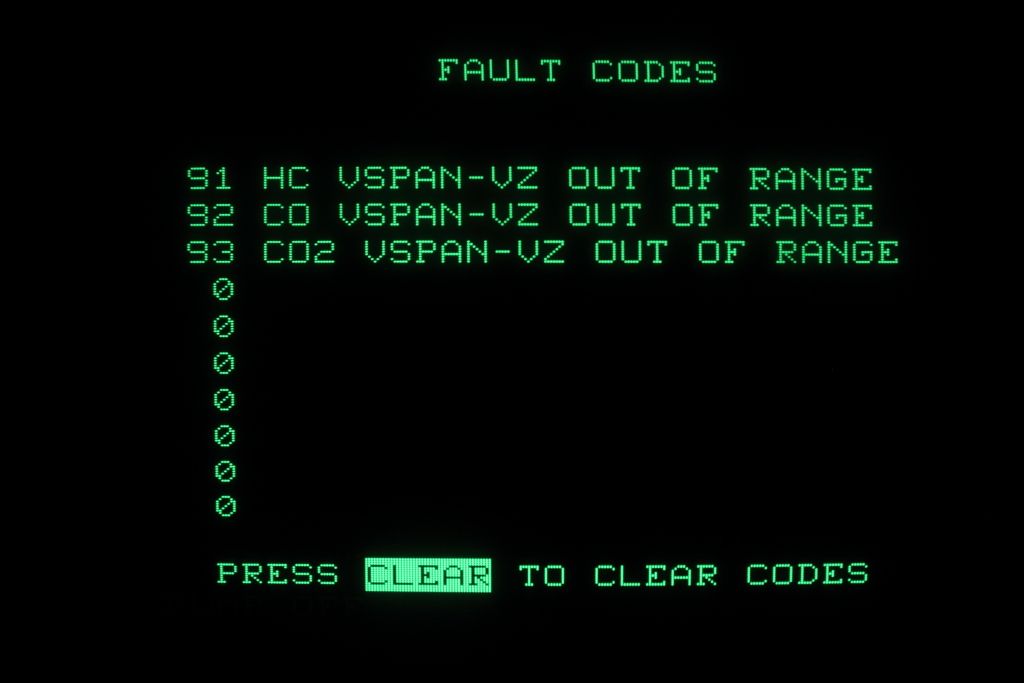
That is usually however the least of one's issue with the gas analyzer. The other is that originally it used natural latex tubing which after many years has gone hard and brittle and by the time I had it most of it was bits and pieces at the bottom of the machine. Going through years of google indexed forums this is a VERY common problem with analyzers and most people never got past this point of asking for service documentation. In general it seems there's a lot of analyzers floating about where they were bought, they didn't know what they bought, they didn't know how to fix it, the machine was in fair to poor condition and the alst post was in 2015 so it's probably long gone now. It was just like yelling into a crowd that didn't care. While there are sources willing to sell manuals in PDF, the real answer is to dig through a very large catalog of analyzer manuals someone has put on Archive.org - https://archive.org/details/engine-analyzer-manuals/42-000 EZ Reference 25763-1/
With the service manual for the MEA-1500 I was able to locate the routing diagram and rebuild the analyzer using food grade vinyl tubing.
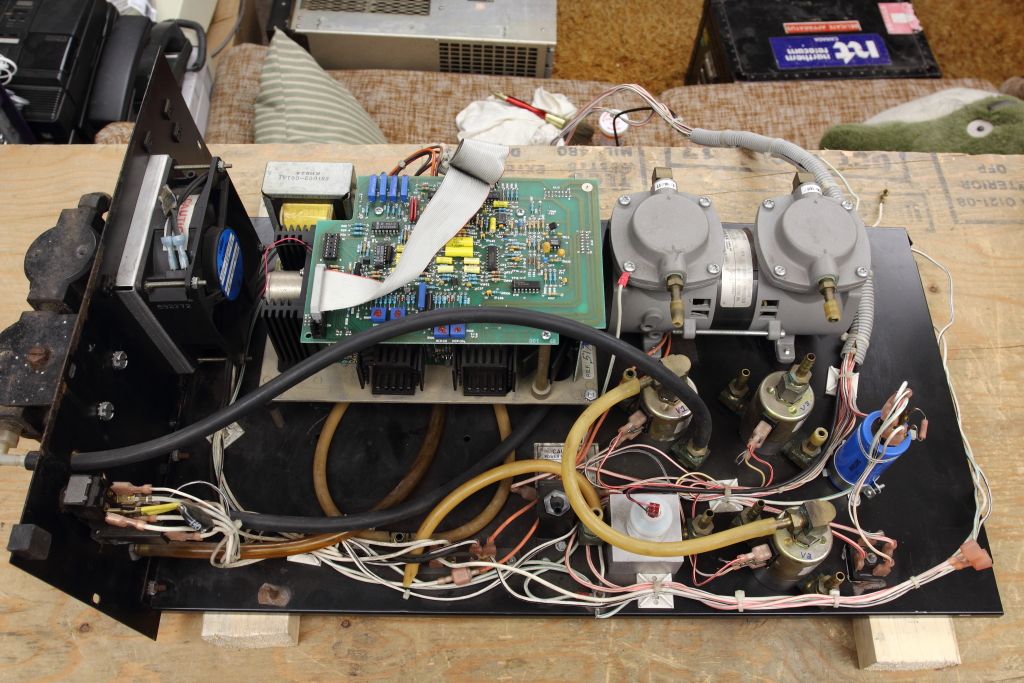
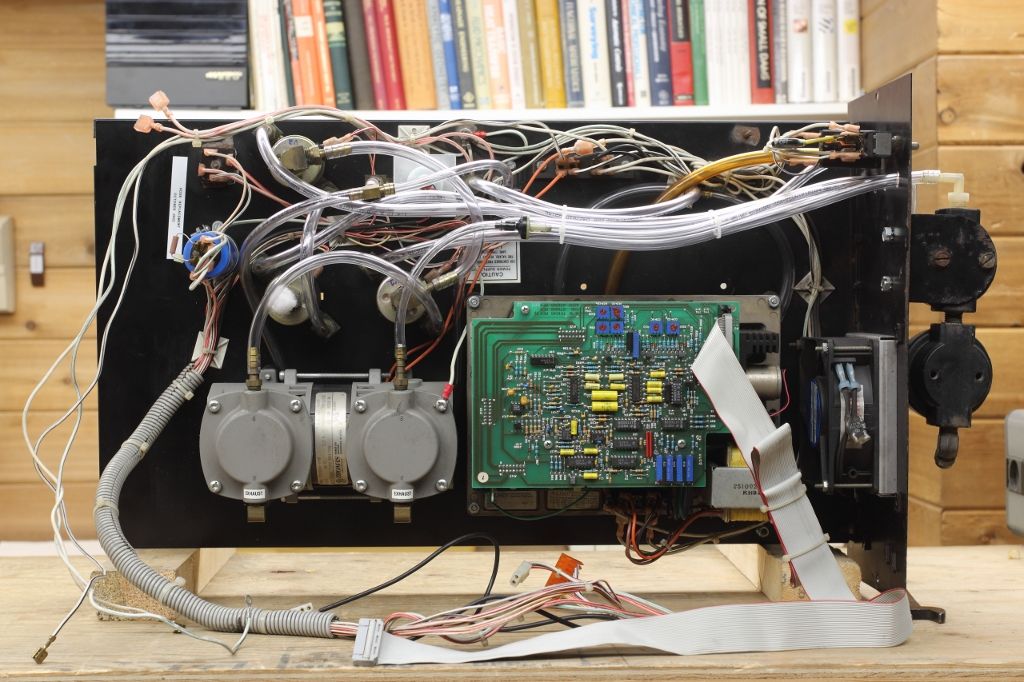
The oxygen sensor, while still available at the writing of this article is another part that not only needs to be calibrated but is also an age-sensitive device, expecting to be replaced every 18 to 24 months, once removed from its shipping container. At $15 per sensor, yikes. I have not even considered the cost of the calibration gas yet, but the rest of the analyzer doesn't care if it's not calibrated and will continue to operate with it attached.
The distributorless Ignition is honestly something I'm not entirely familiar with. This is somewhat limited to the systems used by The Big Three until 1994 or so. It didn't actually come with my analyzer but the full kit was very cheap separately so I bought it as well.
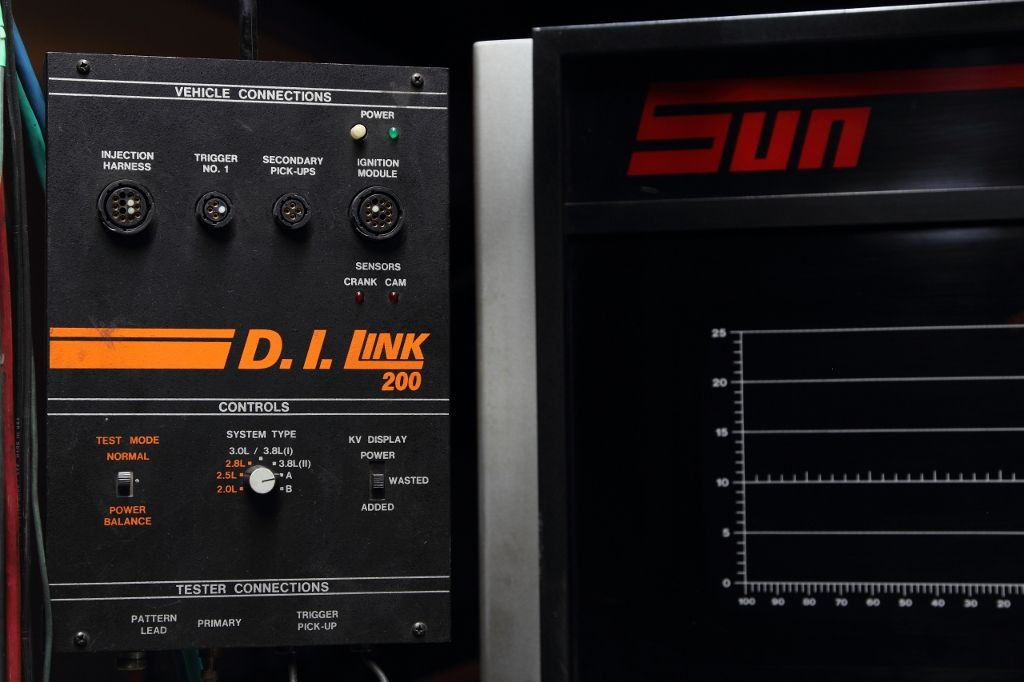
Lastly an option I do not have is the Data Link. This was an interface for the very early ECU's that allowed for one-way communication so you could see fault codes or a very limited amount of realtime data. The installation of the kit to the machine uses a serial port and it boots itself separately using floppy disks. As cool as it sounds I don't have much of an interest in that option if I don't already have it, as a properly configured scantool from the same time period (see below) will do twice as many vehicles as the Data Link can and provide a lot more functionality.
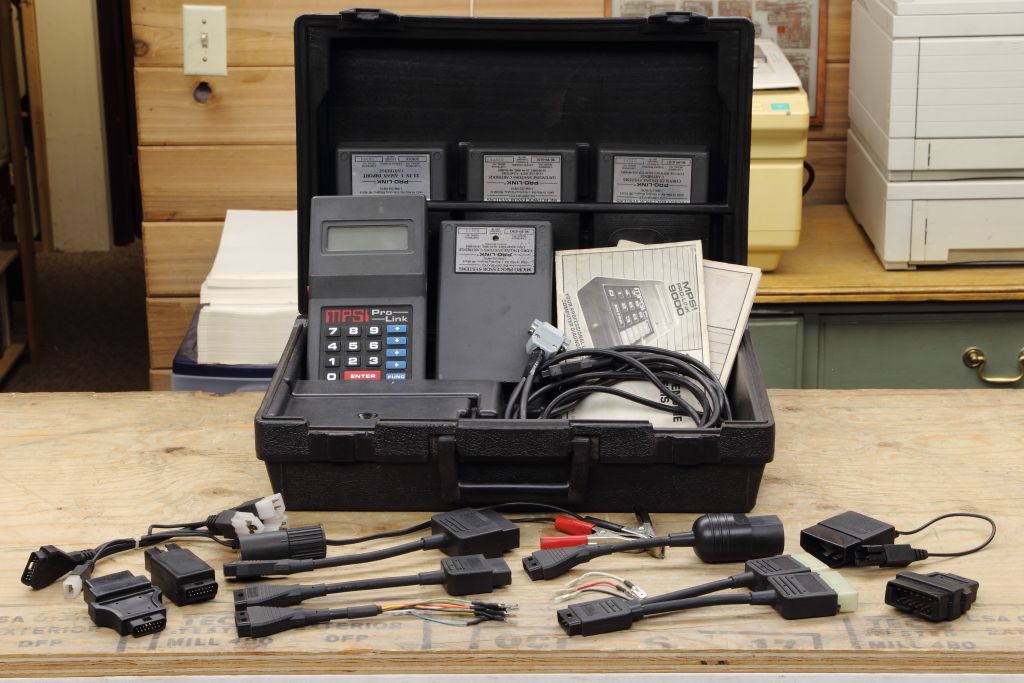
Hookup is straightforward with the manual showing how everything attaches, the data is all displayed on one screen. Both the raster display and the scope are controlled by a wired remote. The knobs below the scope merely adjust the alignment of patterns on the screen and a single button can either freeze the data (but not the scope!!) and another can send it to the printer for a hard copy. The red switch and the red button on the remote allow you to use the cylinder test mode to kill all of the cylinders and kill the engine. Neat safety feature.
As a last test before my machine goes away for the winter it was used to check timing and perform a tune-up. Overall while it's a massive piece of equipment, if you can get one that's not too rough and with plenty of cables and accessories (and you have the place to put it) it's worth the investment to the home mechanic but otherwise it can be quite restricting on what it can and cannot do. Ultimately though it's a specialty tool so that is to be expected.
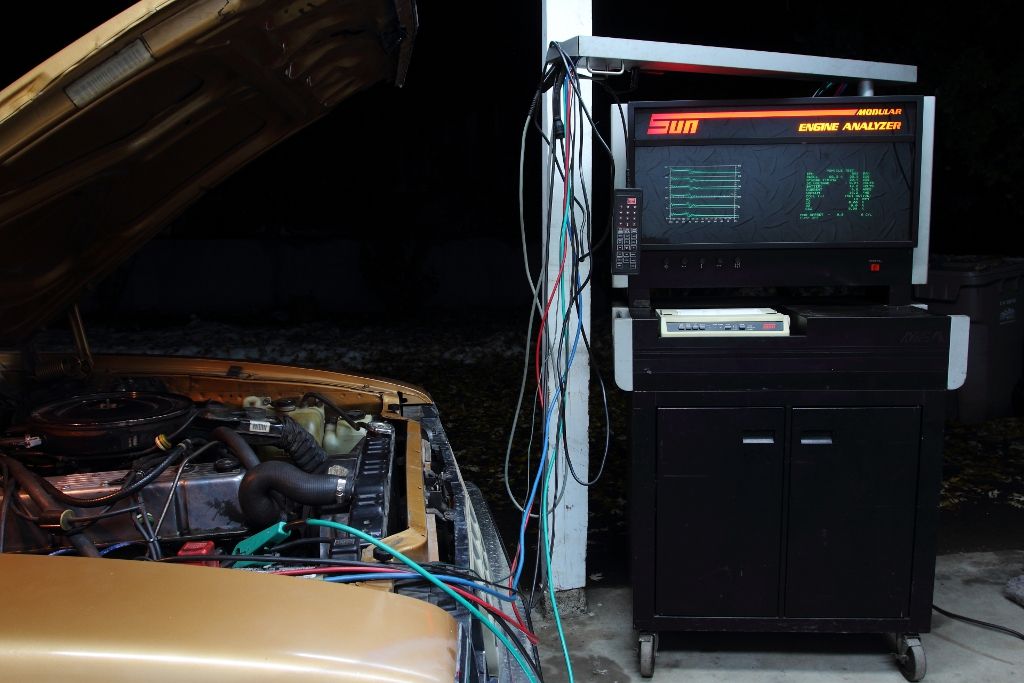
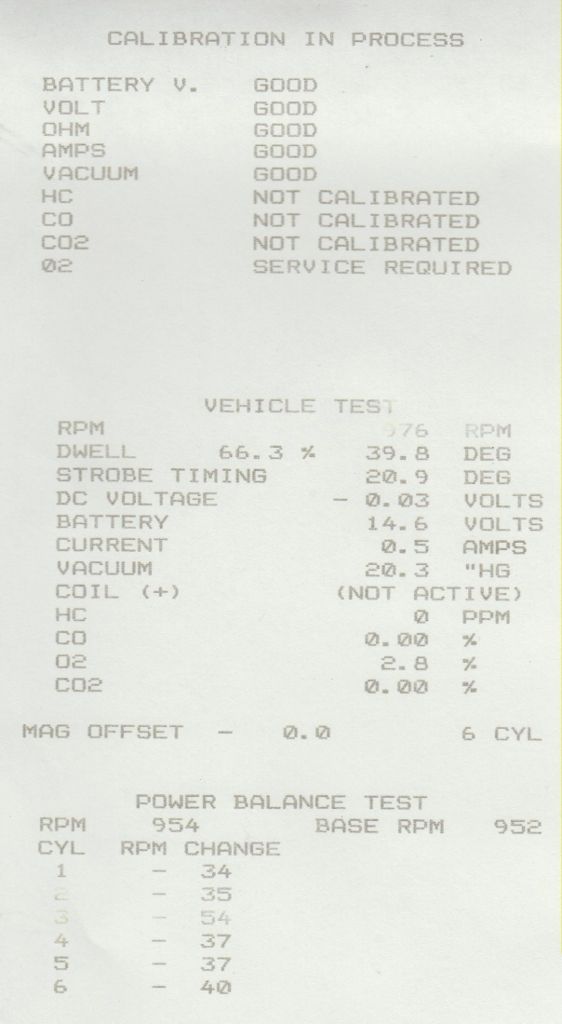
To be blunt, this is several specialty but still useful diagnostic tools integrated into one device. The idea was that it didn't require multiple carts or multiple people to perform these tasks, saving time and keeping the lifts empty. Sun Electronics is a company next to Bear and Allen who were marketing these machines for decades. Those earlier model analyzers seem to consistently sell for hundreds or thousands to go into private collections and garages and sure why not, because when you got almost $100K in classic MOPAR in your three car garage you need a tool to brag with. No promises though that it actually works. I'll explain later.
By the end of the 80's however these made less sense to cart around the garage. Cars were getting more reliable and their onboard computers were able to detect their own faults. By the time OBD2 was released they were basically extinct.
Those later machines are far less desireable because their modern look and video displays clash with the style of classic cars such as the Newport, Barracuda, Falcon and the Javelin and the old guard is still resentful if not completely ignorant of the Malaise Era. Your loss then. While the later machines might clash with your car's asthetic they do circles around the older machines in terms of capabilities and cost far less. Using Google you can find dozens of closed sales, auctions and liquidations where machines were selling for $200, $100, $50 or if they sold at all the new owner was typically paying the opening bid.

This is the MEA-1500. This particular machine was manufactured in 1992 but date codes also indicate it was a thing going back to the 80's. It can do points. It can do solid-state. It can do the early distributorless ignitions. These were sold as a base machine with measurements for volts, ohms, RPM and high voltage patterns. Everything else is an option.
-The cart
-The boom arm
-The ammeter and vacuum
-The 4-gas analyzer
-The mentioned distributorless ignition testing package.
-Magnetic timing instead of strobe
-The printer
-The late-model computer interface kit ("Data Link")
-The Diesel Engine Kit
-Extra adapters for various other car manufacturers
This was one of the last models sold before Sun redesigned the next model machine (Modular Computer Analyzer - The MCA-3000) to be a bunch of fancy ISA cards in a PC and it devolved from there to basically a PC on a cart.
With a basic machine you can monitor RPM, look at primary and secondary voltages, coil patterns, selectively kill cylinders and use a strobe to set timing. The cart and boom are convenience. The ammeter and vacuum transducer are handy for monitoring loads. The gas analyzer monitors CO, CO2, O2 and hydrocarbon emissions. Magnetic timing increases timing accuracy. The printer lets you produce hard copies of the display. (but not the scope!)
The internals consist of an MC6803 embedded system with a large amount of I/O expansion, a CRTC and settings/calibration data stored in a Dallas no-slot battery-backed module. Your displays are a conventional raster display and an oscilloscope.


My machine is specced with the base hardware, plus the cart, boom, ammeter/vacuum, gas analyzer, Distributorless ignition, printer and technically the magnetic timing kit was with it originally, but I didn't receive the probe. Other than needing a substantial cleaning it was reassembled and came up no problem on the first try.



The scope however needed attention. It had an open fuse but I could find no reason for it to of popped, so a new fuse went in and it continued to work.
The battery backed memory however was going to be a problem. While normally the gas analyzer doesn't need a constant supply of calibration gas, it does need a place to store that calibration data. With a dead battery the calibration data is completely lost.

That is usually however the least of one's issue with the gas analyzer. The other is that originally it used natural latex tubing which after many years has gone hard and brittle and by the time I had it most of it was bits and pieces at the bottom of the machine. Going through years of google indexed forums this is a VERY common problem with analyzers and most people never got past this point of asking for service documentation. In general it seems there's a lot of analyzers floating about where they were bought, they didn't know what they bought, they didn't know how to fix it, the machine was in fair to poor condition and the alst post was in 2015 so it's probably long gone now. It was just like yelling into a crowd that didn't care. While there are sources willing to sell manuals in PDF, the real answer is to dig through a very large catalog of analyzer manuals someone has put on Archive.org - https://archive.org/details/engine-analyzer-manuals/42-000 EZ Reference 25763-1/
With the service manual for the MEA-1500 I was able to locate the routing diagram and rebuild the analyzer using food grade vinyl tubing.


The oxygen sensor, while still available at the writing of this article is another part that not only needs to be calibrated but is also an age-sensitive device, expecting to be replaced every 18 to 24 months, once removed from its shipping container. At $15 per sensor, yikes. I have not even considered the cost of the calibration gas yet, but the rest of the analyzer doesn't care if it's not calibrated and will continue to operate with it attached.
The distributorless Ignition is honestly something I'm not entirely familiar with. This is somewhat limited to the systems used by The Big Three until 1994 or so. It didn't actually come with my analyzer but the full kit was very cheap separately so I bought it as well.

Lastly an option I do not have is the Data Link. This was an interface for the very early ECU's that allowed for one-way communication so you could see fault codes or a very limited amount of realtime data. The installation of the kit to the machine uses a serial port and it boots itself separately using floppy disks. As cool as it sounds I don't have much of an interest in that option if I don't already have it, as a properly configured scantool from the same time period (see below) will do twice as many vehicles as the Data Link can and provide a lot more functionality.

Hookup is straightforward with the manual showing how everything attaches, the data is all displayed on one screen. Both the raster display and the scope are controlled by a wired remote. The knobs below the scope merely adjust the alignment of patterns on the screen and a single button can either freeze the data (but not the scope!!) and another can send it to the printer for a hard copy. The red switch and the red button on the remote allow you to use the cylinder test mode to kill all of the cylinders and kill the engine. Neat safety feature.
As a last test before my machine goes away for the winter it was used to check timing and perform a tune-up. Overall while it's a massive piece of equipment, if you can get one that's not too rough and with plenty of cables and accessories (and you have the place to put it) it's worth the investment to the home mechanic but otherwise it can be quite restricting on what it can and cannot do. Ultimately though it's a specialty tool so that is to be expected.


Last edited by a moderator:
